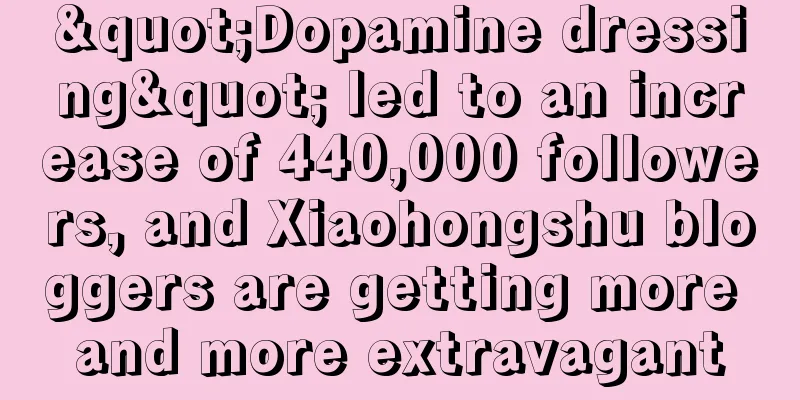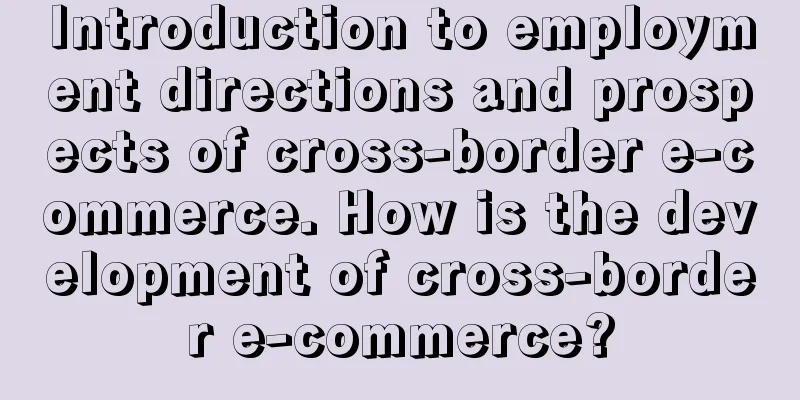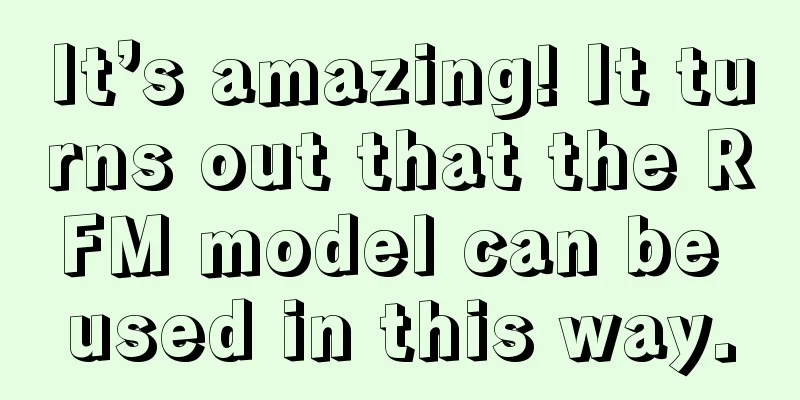How to build a corporate strategy house?

Where there is a brand house, there is a corporate strategy house, the latter being a basic requirement for marketing strategists. If the core of the brand house is to solve the accumulation of brand assets, then the corporate strategy house solves the direct business source of the enterprise. This also places higher demands on strategists, because they need to have in-depth knowledge of the industry and also consider the overall situation. Although this will bring about a threshold, it also proves the old saying, "There is a moat only when there is a threshold." The corporate strategy house is the business logic and the core driving force for the growth of the business. The brand house focuses on the information unification of internal and external communication, while the corporate strategy house emphasizes more on the driving of internal business, mainly the internal resource utilization and organizational coordination. It is based on the business strategy of the boss and the second and third positions, and is effectively implemented by the middle and lower levels. We tried to break it down and find the underlying logic of the corporate strategy house. The roof at the top is the business goal of the enterprise, which is mainly aimed at long-term goals. The middle is the strategy to achieve this goal, and the foundation is an important tactic to implement the strategy. The three elements echo each other, and the goals are separated layer by layer, forming a strict logical relationship and forming the core structure of the enterprise strategy, which allows people to understand the strategic goals and strategic layout of the enterprise at a glance. 1. Business Objectives (why)The business goal is the vision of the enterprise, which explains where the enterprise is ultimately going. In other words, it is the goal set by the enterprise over a considerable period of time and is the core issue that the enterprise must first solve in its operations. Whether the business operations of an enterprise are correct or not depends on what goals they are based on and whether they can be achieved. When studying corporate strategy, we should not only look at what it does and how it does it, but also look at what goals it is based on and why it is done (I recommend the 3W Golden Circle thinking logic again). The right or wrong of an event depends on the goal. If you make a conclusion without a specific goal, you are just a hooligan. The right or wrong depends on the goal. Otherwise, even if it is the same event, the actions will be scored in completely opposite ways based on the difference in goals. Actions are judged based on the target, and any action that does not achieve the target is a fake action. Corporate strategy is a system. The order of the system lies in finding a big hat, that is, corporate vision, to guide and judge a series of corporate behaviors. 2. Track, brand, category, and industry chain links (how)How to achieve the goal is actually the logic of goal splitting. Which track to enter, which brand to layout, which category to focus on, and what role to play in the industrial chain. How much revenue, gross profit and net profit does each track, brand, category and industrial chain link contribute? What role does it play for the entire enterprise and how do they interact with each other? These are the ultimate soul-searching questions for the enterprise. After all, any decision-making behavior itself may directly affect the achievement of the enterprise's business goals. Let’s take an example. In the sports footwear and apparel industry, Anta and Li Ning adopt completely different strategies. 1. Anta: Single focus, multiple brands, globalizationSingle focus: focus on the sports footwear industry and consumer value, and make every pair of shoes and every piece of clothing well; each brand focuses on mind categories and establishes leadership in the market segment. Multi-brand: Satisfy consumer demands with multiple brands, create diversified consumer value, build a multi-brand matrix of professional sports, fashion sports, and outdoor sports; strengthen the group-level shared platform that enables the development of multiple brands. Globalization: Let Chinese brands go global and let global brands develop in-depth in the Chinese market; leverage the advantages of the global layout of Anta Group and joint venture Amer Sports to better meet the needs of global consumers; achieve the globalization of market position, brand layout, value chain layout and governance structure. *Source: Anta 2022 financial report 2. Li Ning: Single brand, multiple categories, multiple channelsSingle brand: focus on the core brand Li Ning. Multiple categories: Continue to deepen the five core categories of basketball, running, fitness, badminton and sports life. Multi-channel: Continue to focus on channel expansion and optimization, accelerate the layout of shopping mall channels, promote the establishment of high-efficiency large stores such as flagship stores, develop a diversified channel network, achieve omni-channel collaborative operations, and further improve channel efficiency. *Source: Li Ning 2022 Financial Report 3. Take Bloomage Biotechnology as an exampleAt the industrial chain level, we are both a raw material supplier and a brand owner. At the track level, we make both functional skin care products and functional foods. At the consumer level, we are both a toc consumer and a tob medical terminal. 4. Take Shell as an exampleIt is both a channel (Beike) and a brand (Lianjia). 3. R&D, products, marketing, channels, supply chain, organization (what)If how is the strategic level, then what is the tactical level. It can be broken down from four dimensions: R&D, marketing 4P (mainly product, channel, marketing), supply chain, and organization . 1. R&D layerR&D has two main meanings: one is to consolidate the professional tone of the brand, and the other is to enhance product strength. Of course, the R&D expenditure ratios of different industries vary, but the main core actions are almost the same. Generally speaking, there are four main aspects: the number of patents obtained; leading or participating in the standard setting of relevant departments; obtaining relevant official awards or titles; and strategic cooperation with endorsement institutions. 2. Product layerAt the product level, it is mainly based on the logic of product layout , which can generally be driven by large single products/large series, or dual large single products, because core products still need to contribute to the main revenue. 3. Channel layerAs for channels, there are generally several levels of logic, such as online and offline coordination, combination of self-operated distribution, layout of emerging channels, etc. There are several key points to note at the channel level: core channels (contributing to top sales), image channels (endorsing the brand), growth channels (achieving the second growth curve), and clearance channels (choosing which channel to clear inventory and digest inventory pressure). 4. Marketing layerGenerally, the main points include brand upgrading and rejuvenation, brand building to increase premium, and brand core value communication . 5. Supply ChainThe supply chain mainly includes three aspects: demand and planning, procurement and production, and logistics delivery. Demand and plan: Understand demand and customize plans, especially sales explosion nodes. Procurement and production: Purchase raw materials according to demand, plan production capacity in advance, and ensure that products can be completed in quality and quantity. Logistics delivery: Optimize the logistics system to ensure that the goods can be delivered to customers on time and intact. 6. Organizational LayerStrategy is executed by people, and people need to be organized, so it is an organizational strategy. There are three main aspects: How the organizational structure is set up. The organizational structure shows the company's strategic focus and coordination mechanism, and how the front, middle and back ends work together. The core consideration of talent building is that differences in people determine differences in things, and the background of talents affects the prospects of the company. The core logic of mechanism-driven development is that the team needs a mechanism to drive it and activate the team's enthusiasm. IV. ConclusionThe corporate strategy house is a business-driven system. The important thing is to build the core resources of the enterprise to drive business growth. At the same time, there is no completely standard logic in this room. There will be certain differences in different industries and companies. We provide one of the thinking logics to help everyone find the essence. Author: Zang Feng Source: WeChat public account "Strategy People Hidden Edge" |
<<: E-commerce “exam”, the answer sheets are “similar”?
>>: To monetize traffic, Xiaohongshu and Douyin compete for offline merchants
Recommend
What is the appropriate profit margin for Amazon product pricing? How is it usually priced?
Although Amazon products are exported overseas, me...
10 very interesting copywriting
The author shared 10 very interesting copywritings...
Does Lazada need to consider VAT when calculating prices? How to set prices?
Lazada is still gaining momentum in Southeast Asia...
With 3 million private domain users and a 5-fold increase in mini program GMV, how did Jiumu Miscellaneous Store achieve high growth in private domain performance?
This article starts with the growth of private dom...
Xiaomi, a walking marketing textbook
This article deeply analyzes the marketing strateg...
What does a new Shopee store need to do? What are the basic tasks of a new store?
The development of the Shopee platform is very goo...
Mid-year Thinking Bureau | 5 trend observations and thoughtful suggestions about brands!
The author observes the trend of brands and makes ...
8 trial and error funnels for brand owners to save 1 million yuan in losses
Many brand owners are crossing the river by feelin...
It’s really cool to use DeepSeek to make Xiaohongshu
In today's era of rapid development of social ...
How long does it take for a new Wish member to place an order? How can I place an order?
Wish, a cross-border platform, is good at mobile t...
If you don’t understand emotional marketing, you can’t be a brand CMO
Emotions and brands are closely linked in modern b...
How many points will Shopee deduct before being frozen? Is there still a chance after being frozen?
Shopee platform, like other platforms, actually ha...
Does the number of Amazon ratings mean sales? What is the relationship?
Once an Amazon product is sold, the cumulative sal...
Who made money on Xiaohongshu by being "abstract"?
"Xiaohongshu's 'abstract' style, ...
Why does Amazon only sell one order a day?
Amazon merchants sometimes encounter a sudden surg...









